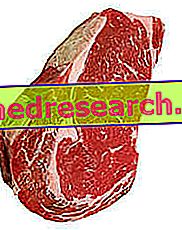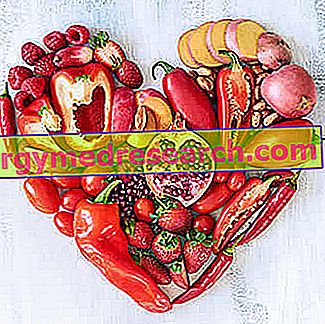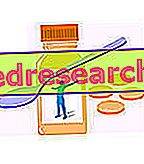Animal fats: what are they?
Animal fats are food products of generally solid or semi-solid consistency, obtained from animal tissues with a high fat content. Among the best known representatives of the category we remember:

Butter : food product obtained by processing the cream obtained from cow's milk or from its serum.
Lard or lard : food product obtained by fusion of fats present in the adipose tissue of the pig.
Tallow : food product obtained by fusion of fats present in the adipose tissue of cattle, or more rarely of horses or sheep.
Lard : food product obtained by salting, aromatizing and maturing the layer of fat that is found just below the skin (rind) of the pig.
Pancetta : a food product, more or less seasoned and flavored, prepared from the belly and the side of the pig.
Marine oils : food products obtained by cold pressing of fabrics rich in fat or by chemical extraction from industrial processing residues; examples are cod liver oil, whale oil and capidoglio oil.
Animal fats and health
Broadly speaking, animal fats are all lipid parts that can be isolated from food and food products of animal origin (meat, dairy products, eggs, etc.). In nutritional terms, when it comes to animal fat it is generally excluded from the category of fish fat, since it has a particular acidic composition. Animal lipids are in fact rich in saturated fatty acids, which should be consumed with some moderation, especially in the presence of overweight, hyperlipidemia and increased cardiovascular risk; in a healthy diet saturated fats should not exceed 7-10% of daily calories (max 15-30 g / day in relation to daily caloric needs). The excess of these nutrients, in fact, in synergy with the cholesterol of which animal fats are equally rich, facilitates the growth of atherosclerotic plaques inside the arteries. Consequently, those who consume large quantities of animal fats are more subject to certain cardiovascular diseases, in particular ischemic heart disease and its fearsome consequences (angina pectoris, myocardial infarction and stroke). This relationship is especially true if there are other risk factors, such as smoking, physical inactivity, hypertension and android obesity (fat concentrated in the abdominal region).
| Food | Saturated fat (g) | Monounsaturated (g) | Polyunsaturated (g) | B.C. mystic (g) | B.C. palmitic (g) | B.C. steraico (g) |
| Lard | 39.2 | 45.1 | 11.2 | 1.3 | 23.8 | 13.5 |
| Butter | 51.3 | 21 | 3.0 | 7.4 | 21.7 | 10 |
| Olive oil | 13.8 | 72.9 | 10.5 | 0 | 11.3 | 1.9 |
| Palm oil | 49.3 | 37 | 9.3 | 1 | 43.5 | 4.3 |
| Cod oil | 22.6 | 46.7 | 22.5 | 3.6 | 10.6 | 2.8 |
| Parmesan hard cheese | 16:41 | 7.5 | 0.6 | 2.9 | 7 | 2.3 |
| Pork sausage | 11:27 | 14.3 | 4.0 | 3.9 | 6.6 | 3.9 |
| Chicken breast without skin | 00:33 | 0.3 | 00:28 | 00:01 | 00:21 | 0.1 g |
| Chicken breast with skin | 2.66 | 3.82 | 1.96 | 00:08 | 1.95 | 00:54 |
| Mackerel | 3.3 | 5.5 | 3.6 | 0.7 | 2, 125 | 00:43 |
Crustaceans, despite being particularly rich in cholesterol, are considered less atherogenic than animal fats, since they contain few saturated hypercholesterolemic fatty acids. The cholesterol content of red and white meat is also similar, but since the latter is less rich in saturated fat, it is preferred to red. In fish fats the saturated fat content is limited compared to animals, while the proportion of omega-3 polyunsaturated fatty acids clearly increases; these fats have a neutral effect on cholesterol levels in the body, while they facilitate the reduction of blood triglycerides and reduce the body's inflammatory state (useful in the prevention of the aforementioned cardiovascular diseases).
All animal fats are not recommended for frying or for high-temperature cooking. Although it is better for cream and butter than all other animal fats, in these cases the choice should fall on vegetable oils such as olive, peanut or sunflower oil with a high content of oleic acid.
The Fulani, a nomadic ethnic group of West Africa, draw about 25% of the daily calories from saturated fats (therefore 2.5 times more than the recommended levels); despite this their lipid profile (concentration of various lipids in the blood) clearly indicates a low cardiovascular risk. This evidence can be explained on the basis of the high level of physical activity, as opposed to a low energy intake. It is therefore important to reiterate how the danger deriving from the excess of animal fats in the diet is amplified by the high-calorie diet and by the typical sedentary lifestyle of industrialized countries.



